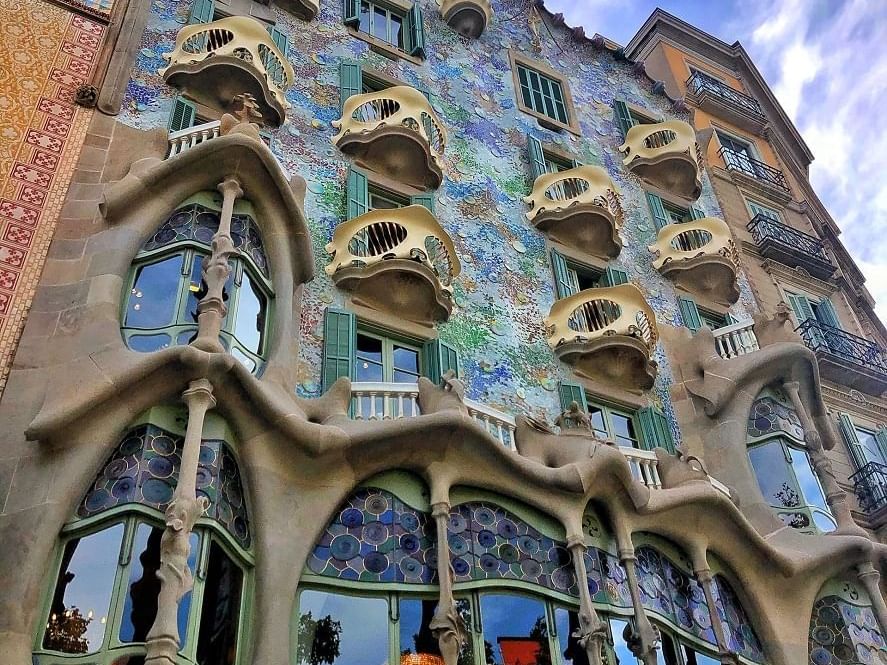Antoni Gaudí, the eminent Catalan architect, left an indelible mark on the world with his innovative and unparalleled architectural creations. Among his masterpieces, Casa Batlló stands out as a testament to his genius and creativity. This iconic building, located at number 43 on Passeig de Gràcia in Barcelona, is not just an architectural marvel but also a symbol of the modernist movement.
The Early Years of Antoni Gaudí
Born on June 25, 1852, in Reus, Catalonia, Gaudí hailed from a family of skilled boilermakers. His early exposure to working with space and volume in his family’s workshop laid the foundation for his extraordinary talent in architectural design. As he honed his skills, he embarked on a prolific career, creating a myriad of masterpieces that showcased his unique architectural language.
Casa Batlló: A Jewel of Modernism
Among Gaudí’s exceptional works, Casa Batlló stands out as a crowning achievement of modernist architecture. Originally built in 1877 by Emilio Sala Cortés, the building underwent a radical transformation between 1904 and 1906 under the creative vision of Gaudí. Commissioned by textile industrialist Josep Batlló y Casanovas, the building became a canvas for Gaudí’s imagination.
Gaudí’s design for Casa Batlló was inspired by the Mediterranean Sea, reflecting the fluidity and organic forms found in nature. He reimagined the façade, redesigned the internal layout, and expanded the lightwell, infusing the building with artistic brilliance and functional efficiency. Casa Batlló, along with several other houses including Casa Amatller, Casa Lleó Morera, Casa Mulleras, and Casa Josefina Bonet, became part of a unique ensemble known as “The Bone of Contention,” each contributing to Barcelona’s modernist legacy.
Preservation and UNESCO Recognition
In the 1950s, Casa Batlló changed hands multiple times before being acquired by the Bernat family in the 1990s. Their dedicated restoration efforts breathed new life into this architectural gem. In 1995, Casa Batlló opened its doors to the public, allowing visitors to marvel at its splendor. Recognizing its architectural significance, UNESCO designated Casa Batlló as a World Heritage site, solidifying its place in the global architectural heritage.
Visiting Casa Batlló
Today, Casa Batlló stands as a testament to Gaudí’s unparalleled creativity and vision. Welcoming over a million visitors annually, it offers a captivating experience for those eager to explore the wonders of modernist architecture. Upon entering Casa Batlló, visitors are transported into a world of artistic brilliance and architectural ingenuity.
Visitors can witness the interplay of light and color, the elegant curves and organic forms, and the meticulous attention to detail that define Gaudí’s style. The building’s interior, with its intricate designs and imaginative spaces, showcases the architect’s mastery in transforming ordinary materials into extraordinary works of art.
Planning Your Visit
For those planning to explore Casa Batlló, the journey begins on Passeig de Gràcia, one of Barcelona’s most iconic avenues. The site is easily accessible by metro, train, and bus, making it convenient for travelers from all corners of the city. Guided tours, lasting approximately 1 hour and 15 minutes, provide a comprehensive understanding of the building’s history, architecture, and significance.
Children up to 12 years enjoy free admission, and various discounts are available for other visitors. Casa Batlló also offers a range of events and activities, ensuring that every visit is a unique and enriching experience.
In essence, Casa Batlló stands as a testament to Gaudí’s creative genius and his ability to transcend architectural norms. As visitors step into this architectural masterpiece, they embark on a journey through time, experiencing the brilliance of a visionary architect whose legacy continues to inspire generations. Casa Batlló is not merely a building; it is a living work of art, inviting the world to appreciate the boundless possibilities of architectural imagination.





